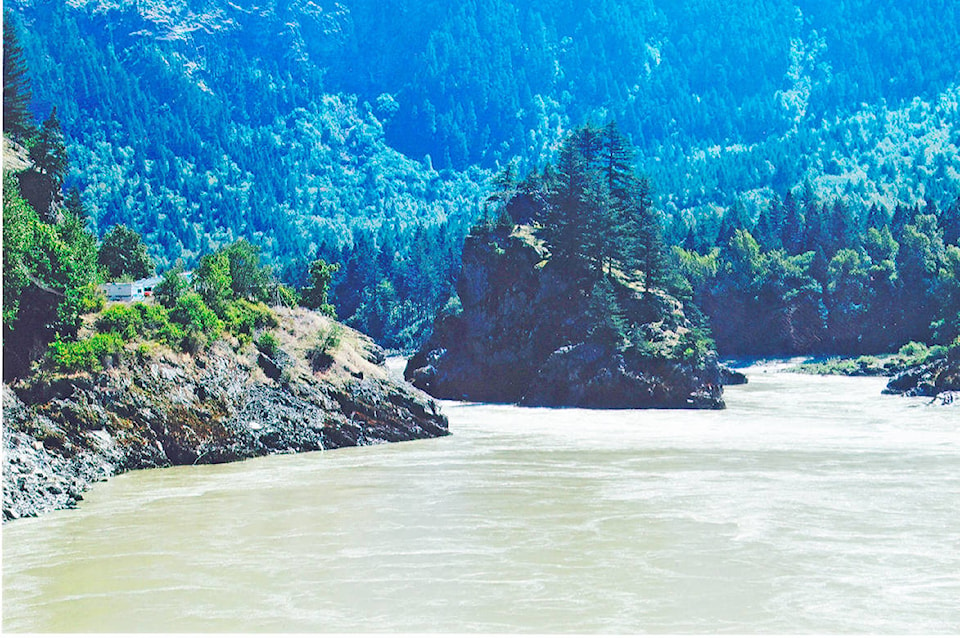Barry Sale
Special to the Tribune Advisor
I often have the occasion to drive down to the Lower Mainland through the Fraser Canyon.
Poking up out of the river, just outside of Yale at the southern entrance to the canyon is a large basalt rock formation.
This natural outcrop, looking more like a small island, can be easily seen from the old highway which runs alongside the river, just below the Yale tunnel.
It has a very interesting history, with a connection to the ill-fated expedition of Sir John Franklin to the Northwest Arctic in 1845.
You may know a little about the Franklin expedition.
Sir John started out from England in the ships HMS Erebus and HMS Terror to locate and map the legendary Northwest Passage from Baffin Island to the Pacific Ocean.
Five years went by, and no word from the expedition was heard, so fourteen ships were sent out from England to search the planned route.
Some of these ships were crushed by the Arctic ice, others were marooned for two or three years and some of the searchers lost their lives, but most of the vessels and crews eventually made it back to England without finding a trace of Franklin or his ships.
It was not until the late summer of 2015 that the Erebus was located by Canadian Coast Guard vessels. The Terror has still not been found.
At her home in London, young Lady Jane Franklin kept her hopes up that her famous husband would one day return, but finally, the Admiralty concluded that he, his crew, and both ships had been lost. (They actually concluded that Sir John had found and negotiated the Northwest Passage, but lost his life on the homeward voyage.)
As a way of coping with her loss and sorrow, Lady Franklin set out to tour the world, and thus she reached the British Colony of British Columbia in 1861.
At Fort Victoria she was welcomed into society circles and entertained with parties, dinners, and concerts. However, her interest was piqued by the gold rush, and wanting to be closer to that action, she took passage on a British gunboat to Yale, B.C.
At the time Yale was in its heyday. It was the head of navigation for the Fraser River, as far up the Fraser you could go by steamboat, and it was the jumping off place for the trip up to the Cariboo gold fields. In 1861, Yale had about 10,000 residents, and was the second largest city north of San Francisco, with Barkerville, “the Gold Capital of the Word” being the largest.
Like her famous husband, Lady Franklin probably had a strong sense of adventure. She was so taken with the rowdy city of Yale that she stayed on there for three months.
Her host was Lt. Col. J.S. Hawkins, Commander of the gunboat HMS Hecate, and a member of the Canada-U.S. Boundary Commission.
Lady Franklin endeared herself to the residents of the hurly-burly frontier city.
She lent a regal presence and a dash of colour to a life that had little variety.
Her presence on the streets seemed to exert a soothing influence on many of the rough men there, and it is said that several violent brawls were stopped in their infancy when she appeared.
When the time came for her to depart and continue on with her world tour, a movement began in the city to commemorate her visit in some appropriate way.
Many ideas were suggested and discarded as being unsuitable until someone suggested naming the huge rock rising out of the river in honour of the distinguished guest.
This idea was overwhelmingly approved by a large majority of the townspeople, so, with the customary pomp and ceremony of the times, the rock was dedicated “Lady Franklin Rock.”
Thus, the memory of the visit and the presence of a beautiful and honourable member of the British aristocracy was destined to become memorialized in our province’s history. Have a look at it the next time you drive by.
